- wikiskripta.sk - Immune system
- solen.sk - Compulsory vaccination of children in EU countries
- uvzsr.sk - Vaccination calendar
Mandatory childhood vaccinations: relevance and safety into adulthood?

In the past, people died of diseases that we now consider trivial thanks to medical advances. Even diseases that the general public now only learns about on the internet have had fatal consequences. They are rare in poorer countries. How have they been suppressed?
Article content
Vaccination is the answer.
We were all vaccinated as children and we are alive. Why do modern moms now object to vaccinating their children?
What is the real meaning of vaccination and what are the risks if you don't vaccinate your child?
Vaccination and its importance?
Parents, be careful! Don't put your child at risk!
False information about vaccinations is experiencing a "big boom"
As it happens, the Internet is full of nonsense and half-truths. These have overshadowed websites with true information and the average person sometimes has no chance to distinguish truth from fiction.
Discussion forums are also full of advice from 'experts in everything' who, perhaps on the basis of their own experience, lecture others. But is that experience verified and analysed with experts?
In case of health problems, the most sensible thing to do is to contact your doctor. In case you want to read something on the internet, prefer official medical sites.
Interesting:
In the recent past, there have been local epidemics of hepatitis due to non-vaccination.
And similarly, whooping cough.
Are these problems worth it?
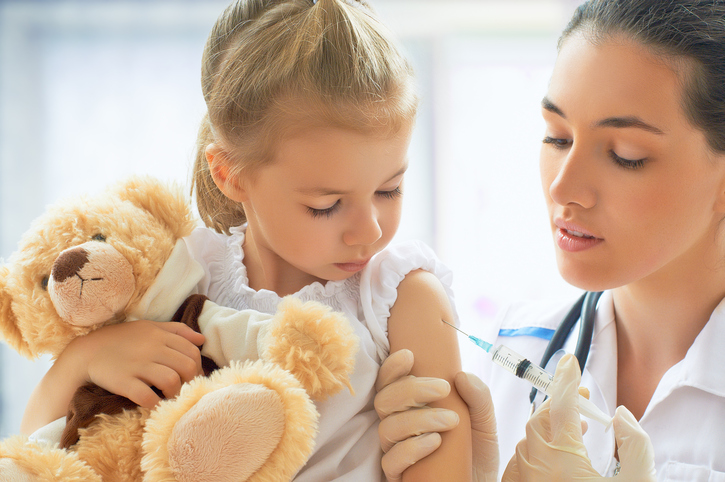
To vaccinate or not to vaccinate?
Similarly, public awareness of the importance and benefits of vaccination is booming among young and inexperienced mothers, who are pushing their own opinions based on unverified information, and doctors fear the worst.
This whole avalanche has been triggered because of unfounded fears. This is due to the news that vaccinations cause various mental and physical disabilities.

If this were really the case, doctors would ban vaccination immediately and certainly would not let their own children undergo it.
The age at which the first vaccinations are administered to babies is also the age at which children and their abilities begin to manifest themselves externally.
Therefore, if a baby has a gait, speech or other problem, it is automatically blamed on the vaccination. However, most of the time it is genetic and other disorders that would have occurred in a particular individual regardless of the vaccination.
The protests by mothers against compulsory vaccination of their children have been steadily increasing. However, the benefit that a child receives from vaccination is far greater than the potential, objectively determined risk.
Adverse effects of a mild nature (slightly raised temperature, nausea, local inflammatory reaction, haematoma) may occur. This is a normal post-vaccination reaction.
Important:
Vaccination is only given to healthy children. If the child has an infection, is immunocompromised or is contraindicated for various other reasons, the vaccination is postponed. In more severe cases, the child is not vaccinated.
Vaccination - definition of basic terms
Vaccination is a form of active immunisation, i.e. to protect the body against disease. A vaccine is injected into the body. The body starts to fight against the vaccine by producing antibodies.
The vaccine contains weakened strains of micro-organisms. The normal reaction in a healthy individual is the production of antibodies against that particular strain (inflammatory reaction). Some vaccinations are given once. For others, repeated vaccinations are necessary to produce specific antibodies that will ensure immunity in adulthood.
The body's defences - immunity
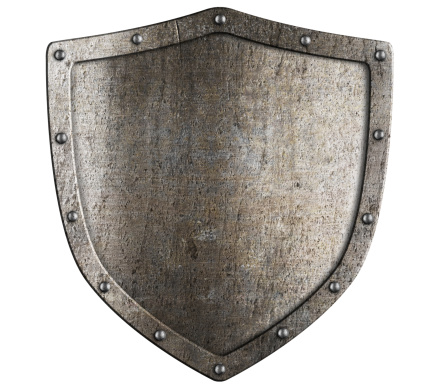
Immunity is the body's ability to defend itself against various infections and the microbes that cause them.
We know innate immunity, which we have from birth. It is the body's natural immunity.
We acquire passive (acquired) immunity during our lifetime, for example after an illness or the vaccinations mentioned above.
Interesting:
Almost all living organisms, from the simplest bacteria and viruses to humans, have an immune system. If it were not for immunity, we would not be exposed to the ordinary external environment at all. It would become inhospitable and life-threatening for us.
Forms of immunity
Innate (non-specific) immunity is the body's natural defences that we possess from birth.
- Mechanical barriers and reactions (skin, mucous membranes, natural microflora in the digestive tract)
- chemical barriers and substances (respiratory system secretes antimicrobial substances, tears contain NaCl)
- pathogen-fighting cells (leukocytes - white blood cells, mast cells)
- the inflammatory response (a form of fighting infection) and finally the specific immune system.
Acquired immunity (specific) is the body's defenses that we acquire after experiencing a disease or through vaccination. It can be active or passive and artificial or natural.
What is immunisation and what types are we familiar with?
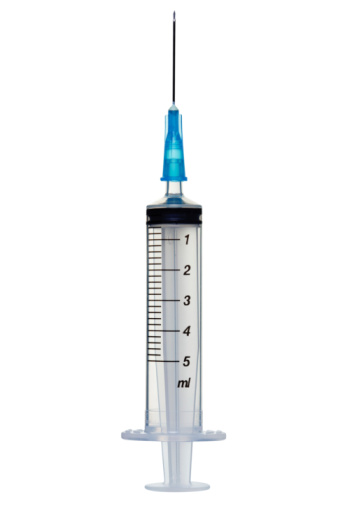
Immunisation is one of the basic epidemiological measures. It is aimed at increasing the immunity (resistance) of the individual and of the population as a whole. It is about inducing specific protection of the organism against specific microbial agents of disease.
The aim is to reduce the incidence of diseases that have spread uncontrollably in the past, causing serious health problems and causing death.
Types of immunisation:
- Active immunisation
- Passive immunisation
The most important types of vaccination
Important:
Unvaccinated children do not only put themselves at risk, but also children who have received vaccinations.
The goal of vaccination is to prevent the occurrence of specific diseases.
Vaccinated children are thus protected.Unvaccinated children, on the other hand, are at high risk of developing diseases against which they have not been vaccinated.
If a child becomes ill (and has low immunity at the time), there is a higher chance of contracting other diseases and spreading various diseases among healthy, vaccinated children.
Children are usually vaccinated against these diseases:
- diphtheria
- tetanus
- pertussis (whooping cough)
- VHB (hepatitis B)
- poliomyelitis (polio)
- morbilli (measles)
- rubella
- mumps
- invasive haemophilus infections
diphtheria, tetanus and pertussis (whooping cough)
The vaccination against these three diseases is carried out with the triple vaccine DTP (diphtheria, tetanus, pertussis). In case of contraindication of one of these vaccines, a double combination or separate vaccination is possible. Recently, it can also be combined with hepatitis B vaccination.
diphtheria
Diphtheria is almost unknown in modern times due to vaccination. However, it is a highly infectious disease of bacterial origin. The trigger is the bacterium Corynebacterium diphtheriae.
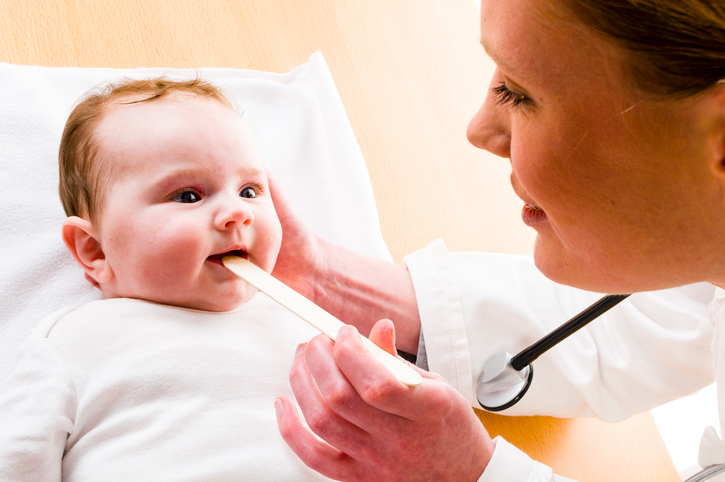
It secretes a dangerous diphtheria toxin that attacks healthy cells and tissues and causes their necrosis (death).
The disease resembles strep throat as it most commonly affects the tonsils, nasal mucosa, larynx and airways.
It is very often confused with angina and incorrectly treated. However, once it enters the bloodstream, it can also damage the heart or the nervous system.
Tetanus

Tetanus is a relatively rare infectious disease of bacterial origin with a 50% mortality rate. The causative agent is the bacterium Clostridium tetani. It is mostly found in soil, but also in the intestines of some animals.
It usually enters the human body after an injury and produces a neurotoxin. The neurotoxin attacks nerve endings, causing a disruption in the transmission of nerve impulses to the muscles.
The result is muscle stiffness and muscle spasms accompanied by pain. Death occurs due to spasms of the respiratory muscles, larynx and diaphragm.
Pertussis (whooping cough)
Whooping cough is a highly infectious bacterial disease affecting mostly newborns, infants and young children. The cause of the disease is the bacterium Bordetella pertussis.
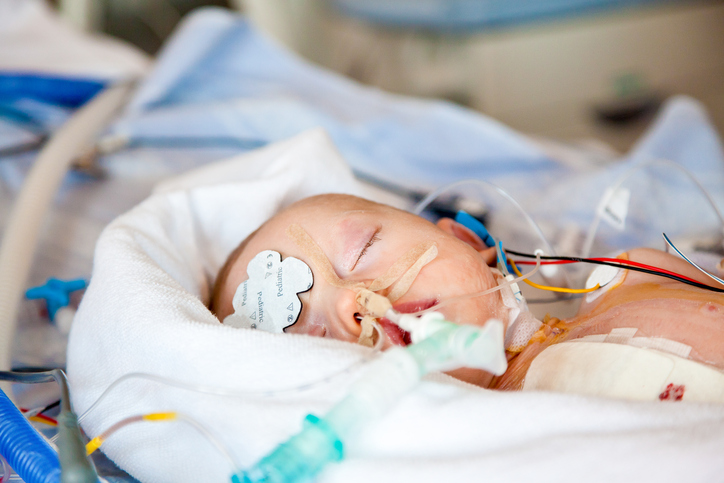
The bacterium colonizes the mucous membranes and tissue of the respiratory tract.
It multiplies very rapidly in these and produces pertussis toxin, which damages the algae of the lung tissue and thus disrupts its function.
It manifests itself in an acute and intense cough with excessive mucus production, marked shortness of breath, inability to breathe, accompanying breathing sounds and cyanosis of the lips.
A weakened child is more susceptible to associated pneumonia. Death occurs as a result of suffocation.
Type B viral hepatitis

Hepatitis B is a disease caused by DNA and RNA viruses. More specifically, it is HBV (hepadnaviridae). Viral hepatitis B is more common in countries with low standards of hygiene. The risk is higher in areas with no vaccination.
The disease initially manifests itself with common flu-like symptoms, joint pain and rashes. Once the virus has penetrated the liver, yellow discolouration of the skin and sclerae occurs.
Death occurs as a result of cirrhosis and subsequent liver failure. In some cases, hepatocellular carcinoma develops. There is an asymptomatic course, which is diagnosed only by the presence of HBsAg in the serum.
Vaccination is usually mandatory for health care workers while still in secondary and higher education. There are also many other occupations at risk. Vaccination is also recommended before travelling to endemic areas.
Poliomyelitis (polio)
Poliomyelitis is a serious, viral disease caused by an RNA virus (poliovirus). Poliovirus attacks the spinal cord horns, which are responsible for muscle movement.

It causes varying degrees of paralysis and even death in the affected individual. Symptomless carriers are more common. Symptoms occur in one infected person in 200 to 300 individuals.
The earliest vaccination against poliomyelitis is usually at the 9th week of life and the latest by the age of one year.
Re-vaccination at 12 years of age is recommended, or vaccination before travelling to endemic areas.
Important:
Travel to a wild poliovirus endemic area without vaccination risks introducing poliovirus into the home country. If this happens, it is a public health risk.
Vaccination against measles, mumps and rubella
A child can be vaccinated against these diseases from the age of 15 months. A triple vaccine containing a live attenuated strain of the causative agents of measles, mumps and rubella is used. It is known as the MMR vaccine (morbili, mumps, rubella).
The vaccination success rate is 97%. Children tolerate the vaccination very well. If an unvaccinated baby is infected, the course of these diseases can be very severe.
Measles (morbilli)

Measles is a human (affecting only humans) viral disease. The causative agent of measles is the RNA morbillivirus of the family Paramyxoviridae.
The disease is manifested by seeding on the skin and fever. Typical are Koplik-Filat spots on the mucous membrane of the oral cavity. The child is cranky, sleepy, unwell.
Mumps
Mumps is a seasonal (spring, winter) viral disease that causes inflammation of the parotid gland (parotitis).
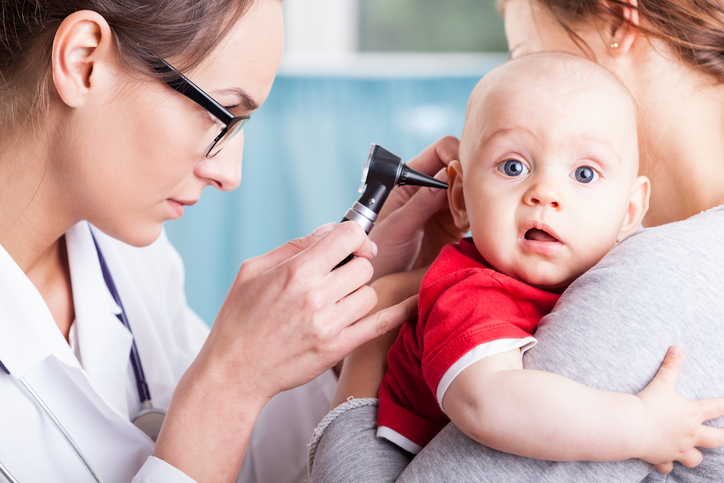
They usually occur in children around 2 years of age who have not been vaccinated. In vaccinated children, the disease usually does not occur.
It presents with local swelling in the parotid gland, uncomfortable soreness and fever. Sometimes the inflammation can affect the other side.
Exceptionally, deafness occurs in the severe course of the disease.
If the infection spreads, there is a risk of meningitis (inflammation of the meninges) or transmission of the infection and involvement of the testicles or pancreas. Pancreatitis can be serious or even fatal, especially in young children.
Rubella (rubeola)
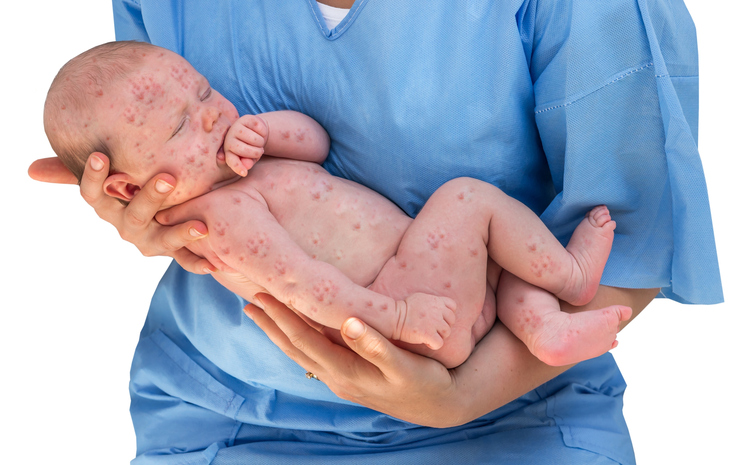
Rubella is a disease caused by the rubella virus belonging to the Togaviridae group. It is characterised by a typical red, blotchy exanthem. It appears on the face and spreads to the chest, limbs and the whole body.
Red patches can be observed on the palate. Associated symptoms include fever, enlargement of regional lymph nodes, malaise, malaise, weakness, headache and sore throat.
It most often affects young children and young people. A complication of the disease is viral encephalitis (inflammation of the brain). However, due to vaccination, this disease is almost never encountered.
Interesting:
On the internet, you will read from mothers that after being vaccinated with the MMR vaccine, their children stopped talking and were subsequently diagnosed with autism, Asperger's syndrome or ADHD. These are genetic diseases that have nothing to do with vaccination. They would have appeared in the baby regardless of vaccination.
Invasive Haemophilus infections
Haemophilus viral infections are most commonly found in infancy. They pose a great, often fatal, danger to the baby.
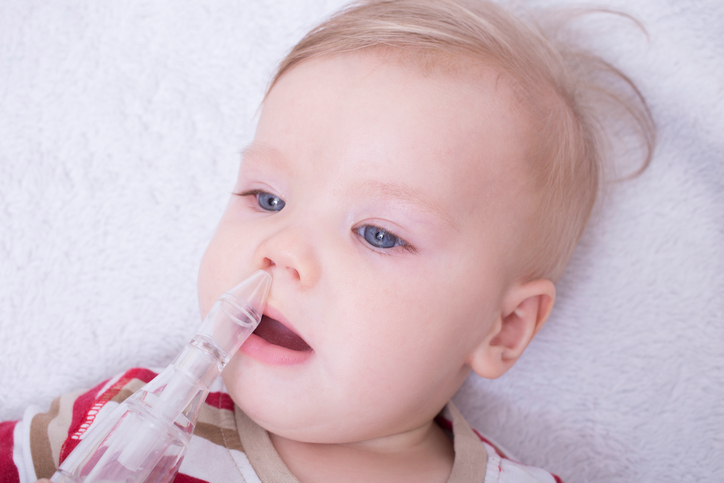
Haemophilus influanzae virus (A, B, C, D, E, F) causes infections of the upper and lower respiratory tract, sinuses and middle ear.
But the most serious risks are haemophilus epiglottitis (inflammation of the larynx), inflammation of the vocal cords, arthritis or meningitis. These complications can cause the death of a child.
Vaccination against Haemophilus influenzae type B is possible.
Interesting:
Haemophilus influenzae is a virus originally thought to cause influenza. However, this virus has nothing to do with influenza.
+ Invasive pneumococcal infections

Pneumococcal infections are bacterial diseases primarily affecting the respiratory system. The causative agent is the bacterium Streptococcus pneumoniae.
The vaccine against pneumococcal infections is highly effective in up to 90% of pneumococcal diseases. It contains up to 23 types of Streptococcus pneumoniae.
Pneumococci cause most lung diseases and vaccination is particularly appropriate for elderly patients over 65 years of age. Vaccination is used in social service settings where the infection spreads rapidly and has a worse, sometimes fatal, course due to the age of the clients.
Interesting:
Optional vaccination against pneumococcal infections is given after the second year of life. It has been shown that immunity does not build up at earlier ages despite vaccination. When vaccination is given, the dose is reduced for higher post-vaccination reactions.
Table with an overview of basic vaccinations
| Basic vaccinations | 2nd dose | 3rd dose | Re-vaccination | |
| Diphtheria | >10 week | after 6 weeks | after 6 months | >2 years |
| tetanus | >10 week | after 6 weeks | after 6 months | >5 years |
| Pertussis | >10 week | after 6 weeks | after 6 months | >13 years |
| VHB | >10 week | after 6 weeks | after 6 months | |
| Poliomyelitis | >10 week | after 1 year | 12 years | |
| morbili | >15 month | 12 years | ||
| rubella | >15 month | 12 years | ||
| mumps | >15 month | 12 years | ||
| haemophilus influenzae | 2 to 6 month | after 6 weeks | after 6 months | after one year |
The time to vaccinate a child varies from country to country.
The differences in vaccination are in some cases large in terms of age. In any case, vaccination is of great importance in the prevention of certain serious diseases and should not be underestimated.
Interesting resources
Related










